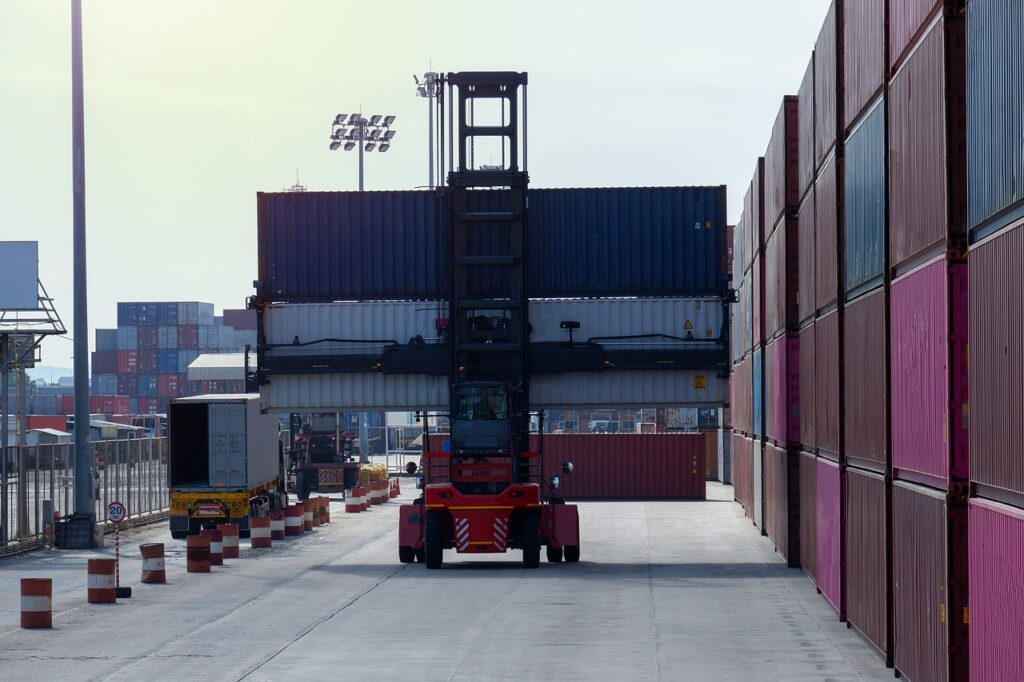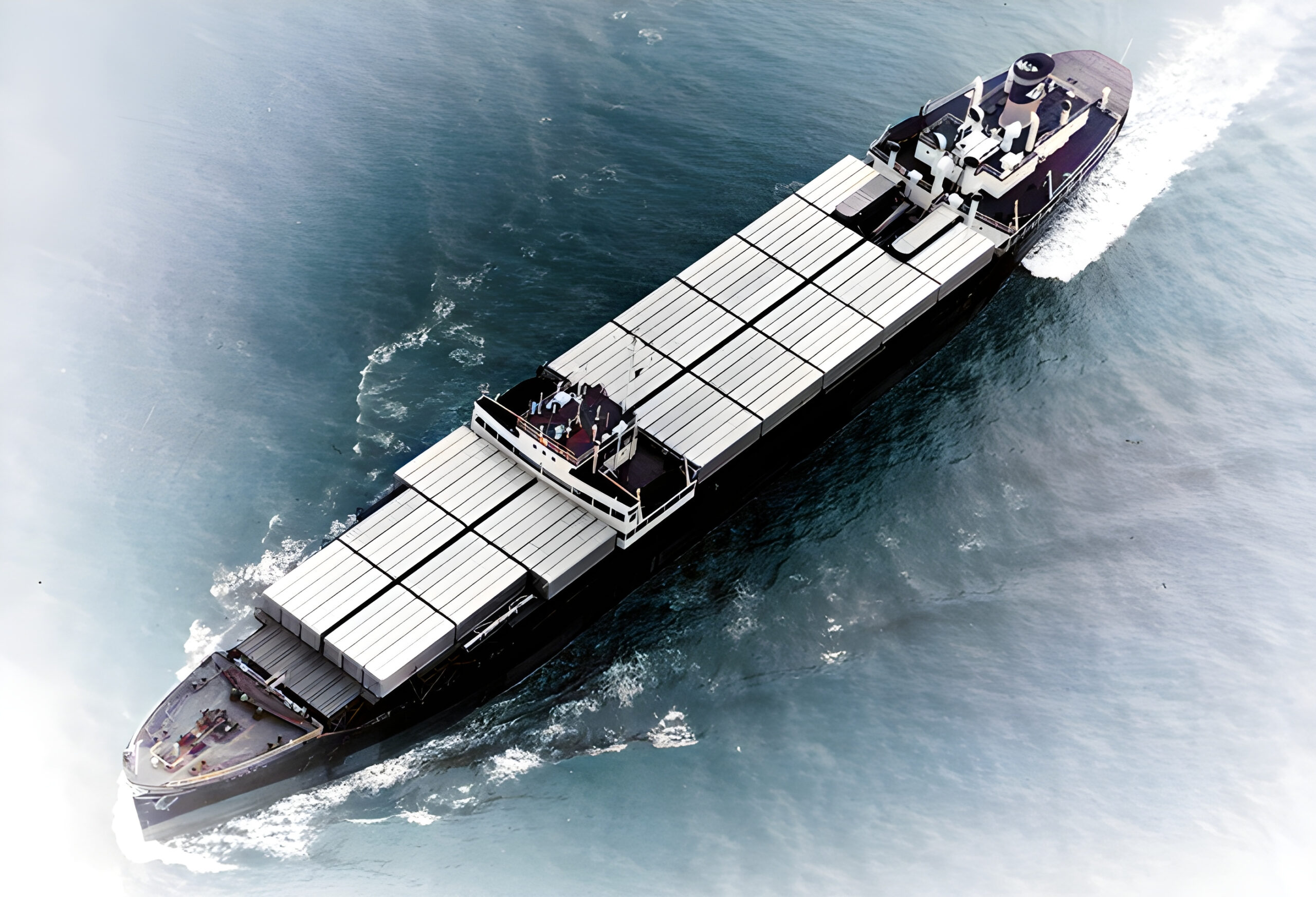Shipping containers are a familiar sight today—stacked high on cargo ships, lined up at ports, or even repurposed into homes, offices, and pop-up shops. But these versatile steel boxes have a fascinating history that transformed the way the world does business. From their humble beginnings in the 1950s to their modern-day applications, shipping containers have reshaped global trade, logistics, and design. In this article, we explore the shipping container history, key innovations, and the far-reaching benefits of shipping containers.
The Birth of Containerization
Before the invention of shipping containers, cargo transport was a slow, labor-intensive, and costly process. Goods were typically loaded and unloaded piece by piece in a method known as “break-bulk” shipping. This often took days or even weeks, required extensive manpower, and left cargo vulnerable to theft and damage.
Everything changed in 1956, thanks to an American entrepreneur named Malcom McLean. McLean, a trucking company owner, envisioned a more efficient way to move cargo between trucks and ships without unloading each individual item. His solution was a standardized, reusable steel box that could be lifted directly from a truck chassis onto a ship—and vice versa.
The first container ship, the Ideal X, carried 58 containers from New Jersey to Houston, marking the birth of containerization. This revolutionary concept drastically reduced shipping times, lowered costs, and laid the groundwork for the global supply chain as we know it today.
The Rise of Standardization
One of the key factors behind the success of container shipping was standardization. In the early years, different companies used different container sizes and locking mechanisms, which created logistical nightmares. However, in 1961, the International Organization for Standardization (ISO) developed a set of specifications for container sizes, corner fittings, and handling equipment.
The most common container sizes became the 20-foot (TEU) and 40-foot (FEU) containers, with standardized widths and heights to ensure compatibility with ships, trucks, cranes, and storage facilities worldwide. This standardization made it possible to develop efficient intermodal transportation networks, enabling goods to move seamlessly across ships, trains, and trucks. This major innovation in logistics continues to provide lasting benefits of shipping containers.
Shipping Containers and the Global Economy
The widespread adoption of shipping containers had a transformative effect on the global economy. Here are a few key impacts:
- Reduced Shipping Costs: Containerization dramatically lowered the cost of transporting goods, making it economically viable to source products from distant countries.
- Faster Transit Times: Automated loading and unloading reduced turnaround times at ports, speeding up the movement of goods.
- Increased Global Trade: As shipping became more efficient and affordable, international trade flourished, allowing businesses to expand into global markets.
- Supply Chain Optimization: The reliability and predictability of containerized shipping enabled companies to implement just-in-time manufacturing and reduce inventory costs.
These are just a few of the many benefits of shipping containers that have allowed global commerce to expand on an unprecedented scale. By the 1980s, major ports around the world had adapted to container shipping, and the global container fleet continued to grow at a rapid pace.

Technological Innovations and Container Evolution
As container shipping matured, so did the technology and design of containers. Over time, several variations emerged to accommodate different types of cargo:
- Refrigerated Containers (Reefers): Equipped with temperature control systems, these containers allow the transport of perishable goods such as food, medicine, and chemicals.
- Open-Top Containers: Ideal for oversized cargo that can’t be loaded through standard doors.
- Flat Rack Containers: Designed for heavy and oversized items like machinery or vehicles.
- High Cube Containers: With an extra foot of height, these containers offer increased volume for lighter, bulkier goods.
- Side Door Containers: Provide easier access to contents, especially for on-site use.
Additionally, GPS tracking, remote monitoring, and smart sensors have become more common, allowing for better visibility and security of cargo during transit. These advancements represent ongoing innovations in the shipping container industry.
Beyond Shipping: The Rise of Container Architecture
In recent decades, shipping containers have found a second life beyond transportation. Their modular shape, durability, and availability have made them a popular choice for architectural and creative uses.
Container architecture (or “cargotecture”) has led to the construction of:
- Pop-up shops and cafes
- Emergency shelters
- Student housing
- Hotels and Airbnbs
- Mobile offices and workshops
- Art installations
- Residential homes
This trend reflects a growing emphasis on sustainability, affordability, and adaptive reuse in design. Repurposing used containers helps reduce waste and promotes innovative, flexible building solutions. This is yet another example of the modern benefits of shipping containers.
Environmental Considerations
While shipping containers have improved logistics and trade, they also raise environmental concerns. The shipping industry contributes to global carbon emissions, and the production and disposal of containers can have ecological impacts.
To address these issues, the industry has begun adopting more eco-friendly practices:
- Use of alternative fuels in ships (e.g., LNG, biofuels)
- Emission control regulations (e.g., IMO 2020 sulfur cap)
- Reuse and recycling of retired containers
- Energy-efficient container design and manufacturing
The continued focus on green logistics is essential for reducing the environmental footprint of global shipping and highlights how shipping container innovations can support sustainability.
Shipping Containers in the Digital Age
Today, containerized shipping plays a crucial role in the global supply chain, especially in the age of e-commerce. The ability to move goods quickly, securely, and cost-effectively is more important than ever.
With the rise of automation, smart ports, and digital logistics platforms, the container shipping industry is poised for further evolution. Innovations like blockchain for tracking, AI-powered route optimization, and autonomous ships are gradually shaping the future of containerized trade.
These technological innovations in shipping containers are helping to create a more connected and responsive global economy.
The Future of Containers
The future of shipping containers goes beyond shipping. As supply chains become smarter and more sustainable, containers will continue to play a key role in trade, infrastructure, and creative design.
- Smart Containers: Equipped with sensors and connectivity to track temperature, location, and condition in real-time.
- Modular Infrastructure: Containers used for disaster relief, medical facilities, and rapid-deployment shelters.
- Hybrid Logistics: Integration of drones, automated warehouses, and AI for faster, leaner distribution networks.
These forward-looking shipping container innovations ensure that containers will remain a vital asset for global logistics and development.
Seablox: Your Partner in Shipping Container Solutions
At Seablox Inc., we are proud to be part of the container revolution. As a trusted shipping container supplier and modification company based in Ontario, Canada, we offer a wide range of new and used containers, rentals, and fully customized builds. Whether you’re looking for storage, transportation, or a unique container project, our expert team is here to help you bring your vision to life. With a commitment to quality, innovation, and personalized service, Seablox is your go-to partner for shipping container innovations, expert craftsmanship, and all the long-term benefits of shipping containers.


